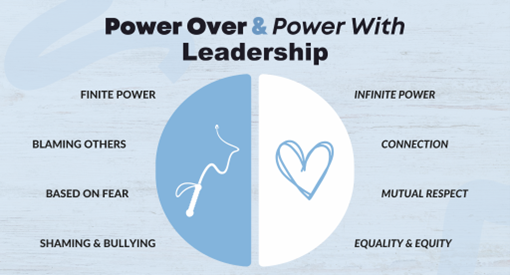
There are (at least) two ways of thinking about power in interpersonal relationships: Power Over and Power With (sometimes recast as “Power To”).
What’s the difference?
Power OVER is about scarcity, rules, procedures, compliance, competition, rewards and threats, hoarding information, assigning blame, fear and skepticism, exclusion, silos, and control.
Power WITH is about abundance, principles, mission, commitment, creativity, focusing on what’s going right, sharing, being open, trust and confidence, inclusion, working together, questioning, inspiring and clarity.
As I’m sure you recognize, traditional hierarchical organizations rely on Power Over. And I suspect that’s where most of our associations fall. But they don’t have to.
In fact, forward-looking organizations need 21st century leaders.
What are 21st century leadership skills?
- Communication
- Emotional intelligence
- Transparency
- Authenticity
- Influence (as opposed to authority)
- Creative
- Innovative
- Inspiring
- Bias towards action
- About the “we,” not the “me”
Which of the above two power models seems like a better match for the realities of *today’s* work place? Looking at the lists above, where would you rather work?
How do we get from here to there? It comes down to each and every one of us honestly assessing ourselves and, each day, choosing to walk the talk of power with rather than power over. You’re not going to completely transform your organizational culture over night. But you can lead, even from the middle, by example. Not everyone will get it. Not everyone will come with you. But we have to start transforming the culture of work somewhere.
What type of leader are you? What type of leader do you want to be?
Image source: Sylver Consulting